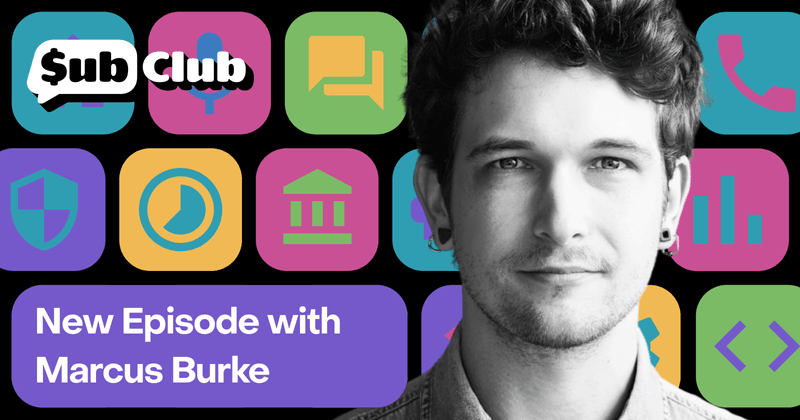“Meta has a very strong algorithm… They’re good at finding your audience for you” — Marcus Burke, Independent Consultant
Marcus Burke on the past, present, and future of Meta ads.

Ads are a tried-and-true way to find new audiences and convert potential users. But recent changes to privacy laws and app store rules, like Apple’s App Tracking Transparency (ATT), have made things much more complicated than they used to be.
To learn how subscription apps can overcome these challenges and grow their business with ads in a post-ATT world, we turned to Marcus Burke, an independent consultant who helps businesses scale with Meta ads. We sat down with Marcus on this week’s episode of the Sub Club podcast and asked him to share his top tips for how subscription apps should build and scale their Meta ad campaigns.
Start consolidated
Especially in the beginning, don’t create too many individual ad campaigns. You may be tempted to create lots of targeted campaigns right away, but this splits your data across several campaign IDs — which prevents the Meta algorithm from effectively measuring results and identifying your ideal audience. As Marcus points out, “You want to make sure a lot of installs are coming through on each of your campaigns so that privacy thresholds are passed and you actually get postbacks and so that Meta sees your trials and can optimize for you. So start consolidated. Don’t go in there and set up different interest targetings and think that you know better than the algorithm because in the end, you don’t.”
Once you have a better sense of your audience (and a bigger budget), you can start creating multiple tailored ad variations to appeal to specific demographics.
Avoid the under-30 crowd
It may seem counterintuitive since young people are social media power users, but there are a couple of reasons to gear your Meta ads toward older users instead. First, users over the age of 30 are more common on Facebook (younger users favor other social media platforms like TikTok), so you should tailor your ad content to the demographic most likely to see it. Second, users over the age of 30 have much higher purchasing power and they’re much more likely to convert from trial to paid. So focus your efforts where they’re most likely to make an impact.
Maximizing insights with SKAN 3
SKAN 3, while helpful, has some unfortunate limitations: you need at least 88 installs per day per SKAN ID in order to receive a postback with event data, and even when you get postbacks, they arrive on a delay.
Keep these challenges in mind as you collect and analyze your ad performance data. Optimize your SKAN schema for your trial event, as it’s the best indicator of business value for your app. And be patient — wait for all of your data to arrive before evaluating a campaign’s performance. Remember that there’s a two- to three-day delay between when you release an ad and when you’ll receive postbacks. Marcus recommends waiting at least a week for your campaign data to arrive and for the algorithm to sort through it in order to get a more accurate picture of your campaign’s impact.
Get creative with your creative
When you’re ready to scale your advertising efforts, it’s time to start fine-tuning your ads’ content and placements. It may sound obvious, but the more your ad looks like the content your users are looking for on their preferred social platforms, the more likely they are to see and engage with it. Spend some time looking at the content your users see on a daily basis in their feed or suggested content, and build your creatives to match the format and vibe.
Marcus also recommends looking outside your bubble: “Follow some sites that you wouldn’t usually because your target audience will be a lot more diverse than what you’re looking at. I follow a broad spectrum of new sites on Instagram and Facebook because I want to see, ‘What are the headlines? How click-baity are they? What are the styles they’re using in their images?’ because then I can tailor my content to them.”
Watch the episode on YouTube or listen wherever you get your podcasts.
You might also like
- Blog post
Modeling attribution on iOS: what works, what doesn’t, and how to choose
How to navigate the messy world of SKAN, AEM, and probabilistic attribution — plus two practical frameworks to get a clearer picture of campaign performance.
- Blog post
Your sprints must pay for themselves: Dan Layfield’s product advice
What’s worth building? Dan Layfield shares a 3-bucket framework to help app teams prioritize features, fix churn, and ship faster.
- Blog post
Is monetization hurting your app’s user experience?
Don’t trade short-term revenue for long-term trust. How ethical UX can still drive effective monetization.

